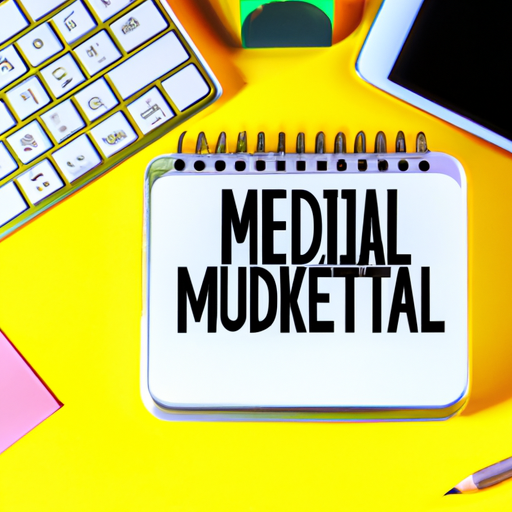Unlocking The Power Of Multimedia Digital Marketing
Multimedia digital marketing is a game-changer in today’s fast-paced digital world.
By combining the power of various media types, businesses can create more engaging and impactful marketing campaigns.
From video content to interactive infographics, multimedia offers endless possibilities to capture your audience’s attention.
Why Multimedia Matters In Digital Marketing
Multimedia digital marketing leverages different forms of media to convey a message.
It includes videos, images, audio, and interactive elements that can transform your marketing strategy.
With multimedia, you can communicate complex ideas more effectively.
Consider a company launching a new product.
Rather than relying solely on text descriptions or static images, they can use a combination of videos and interactive elements to showcase the product’s features.
This not only keeps the audience engaged but also makes it easier for them to understand how the product works.
The Impact On Audience Engagement
Audience engagement is crucial for any successful marketing strategy.
Multimedia content has been proven to hold viewers’ attention longer than traditional formats.
For example, video content is highly effective in keeping viewers engaged because it combines visual and auditory stimuli.
Imagine scrolling through a social media feed.
Which post are you more likely to stop at—a lengthy text post or an eye-catching video with vibrant graphics?
The answer is obvious.
Incorporating multimedia into your digital marketing efforts can significantly boost your audience engagement metrics.
Types Of Multimedia Content To Boost Your Campaigns
There are several types of multimedia content that you can use in your digital marketing strategy.
Each type has its unique benefits and applications.
Videos
Videos are perhaps the most compelling form of multimedia content.
They allow you to deliver your message quickly and effectively.
From explainer videos to customer testimonials, the possibilities are endless.
For instance, if you’re running an e-commerce business, creating unboxing videos or product demonstrations can help potential customers see your products in action.
This builds trust and increases the likelihood of converting leads into paying customers.
Infographics
Infographics are another excellent way to present information visually.
They make complex data easy to digest by breaking it down into smaller pieces combined with visual elements.
Suppose you’re trying to explain industry trends or statistical data related to your field.
An infographic can make these insights more accessible and engaging for your audience.
Podcasts
Podcasts have steadily gained popularity over recent years.
They offer an intimate way for brands to connect with their audience by sharing valuable insights through audio format.
Start a podcast series discussing topics relevant to your industry.
Invite guests who are experts in their fields or share success stories from satisfied customers.
This not only builds credibility but also helps establish your brand as a thought leader in its niche.
The Role Of Multimedia In Search Engine Marketing (SEM)
Multimedia content isn’t just great for engaging audiences; it’s also beneficial for search engine marketing (SEM).
Search engines favor websites with diverse content types because they provide value and improve user experience.
Including videos on landing pages can reduce bounce rates while increasing time spent on site—two factors that positively impact search rankings.
Furthermore, optimizing images with alt text descriptions containing relevant keywords boosts SEO performance too!
Even infographics embedded correctly within blog posts contribute significantly toward better visibility online.
Boosting Conversion Rates Through Interactive Elements
Interactive elements such as quizzes or polls add another layer of engagement within campaigns while contributing positively towards lead generation activities!
For instance: A fitness brand could create an interactive quiz asking users about their exercise preferences then suggest personalized workout plans based upon responses received – driving higher conversion rates naturally without appearing overly promotional.
Real-Life Examples Of Successful Multimedia Campaigns
Let’s explore some real-life examples where companies successfully implemented multimedia digital marketing strategies:
1) Nike’s “Just Do It” Campaign:
Nike utilized various forms including high-quality photographs coupled alongside inspirational videos featuring athletes pushing limits beyond expectations – creating emotionally resonant experiences resonating deeply across global markets alike!
2) Airbnb’s Storytelling Approach:
Airbnb leveraged user-generated content through travel stories shared via short films/photos documenting memorable stays worldwide – fostering genuine connections between hosts & travelers around globe thereby amplifying brand loyalty exponentially!
These examples illustrate how powerful combining multiple mediums together truly becomes when executed thoughtfully under cohesive strategic framework designed specifically catering unique needs/preferences targeted audiences respectively.
Getting Started With Your Own Multimedia Digital Marketing Strategy
Now that we’ve explored benefits associated implementing robust multimedia digital marketing initiatives let’s discuss steps involved getting started effectively:
1) Identify Goals/Objectives Clearly:
Before diving headfirst into creation process ensure clearly defined goals aligning overall business objectives seamlessly ranging increasing website traffic improving lead generation efforts ultimately driving sales growth long-term basis etc.
2) Understand Target Audience Preferences:
Conduct thorough research understanding interests/behaviors demographics psychographics targeted segments ensuring tailored messages resonate appropriately thereby maximizing impact achieved efficiently cost-effectively possible always keeping end-users mind forefront planning stages consistently throughout entire campaign lifecycle duration period respectively.
3) Choose Right Mix Media Types Accordingly :
Based insights gathered select appropriate combination mediums best suited achieving desired outcomes whether incorporating visually appealing graphics compelling audiovisuals integrating interactive functionalities accordingly maintaining balance ensuring cohesive unified narrative presented holistically across different channels/platforms utilized simultaneously cohesively synchronously synergistically essentially perfect harmony overall theme storyline conveyed authentically meaningfully intended purposefully ultimately!
4) Measure Analyze Performance Metrics Regularly Adjust Tactics Needed :
Track progress using analytical tools monitor key performance indicators evaluate effectiveness continuously refining optimizing tactics whenever necessary adapting changing dynamics marketplace conditions evolving consumer expectations demands timely proactively responding agile manner timely fashion staying ahead competition curve always striving excellence delivering exceptional results consistently surpassing benchmarks set initially achieving unparalleled success unprecedented heights altogether!
Implementing these steps ensures smooth seamless transition towards embracing full potential offered leveraging diverse exciting opportunities available harnessing transformative power unleashed revolutionizing ways engage interact connect audiences globally digitally transforming landscape redefining paradigms conventional wisdom ushering era limitless possibilities boundless opportunities awaiting discovery exploration unlocking true essence infinite creativity imaginative innovation ultimately!

